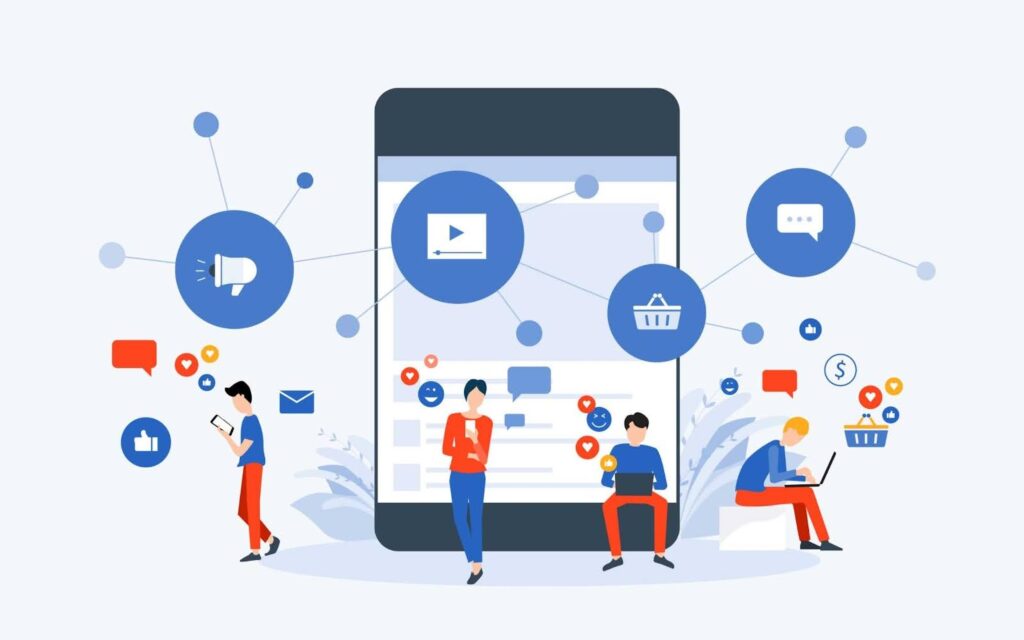First-party data is a cornerstone of modern marketing strategies, offering invaluable insights into customer behavior, preferences, and interests.
This data, collected directly from customers or users, serves as a goldmine for businesses aiming to refine their marketing efforts and enhance customer experiences.
According to Acquia’s findings, 88% of marketing professionals believe that first-party data holds greater significance for companies nowadays. This data type proves valuable by offering insights for crafting more focused and personalized advertising strategies, improving connections with customers, and boosting overall marketing performance. Additionally, using first-party data responsibly contributes to establishing trust with customers and ensures compliance with relevant privacy laws.
In today’s ever-changing digital landscape, where privacy regulations are evolving rapidly, and third-party data is becoming increasingly unreliable, first-party data emerges as the game-changer for marketers looking to connect with their audience effectively. But what exactly is first-party data, and how can it be harnessed to unlock powerful marketing strategies?
This blog delves into the world of first-party data, exploring its potential, benefits, and practical applications in today’s marketing landscape.
What is First-Party Data?
First-party data is information collected directly from your customers and audience through their interactions with your brand. This data can come from various sources, including:
- Website interactions: Page views, search history, clicks, downloads, and time spent on specific pages.
- Email marketing: Opens, clicks, unsubscribes, and purchase history through email campaigns.
- Social media engagement: Likes, comments, shares, and click-through rates on social media posts.
- Customer service interactions: Phone calls, chats, emails, and surveys conducted with your customer service team.
- Loyalty programs: Sign-up information, purchase history, and points earned through your loyalty program.
First-party data is valuable because it offers several key advantages over other types of data:
- Accuracy and Reliability: Since you collect it directly from your audience, first-party data is less prone to errors and inconsistencies compared to third-party data, which can be aggregated from various sources and may not be accurate.
- Relevance and Depth: First-party data provides deeper insights into your specific audience’s interests, preferences, and behaviors, allowing you to tailor your marketing efforts to their unique needs.
- Ownership and Control: Unlike third-party data, which can be restricted or disappear due to changes in regulations or platforms, you own and control your first-party data, giving you complete autonomy over its use.

Benefits of Using First-Party Data in Marketing
By leveraging the power of first-party data, marketers can unlock a wide range of benefits, including:
Enhanced Personalization
First-party data allows you to create highly personalized marketing experiences for your audience. By understanding their individual preferences and behaviors, you can deliver targeted content, offers, and recommendations that resonate more deeply with them.
For example, an e-commerce store can use first-party data to personalize product recommendations based on a customer’s purchase history and browsing behavior. This personalized approach can significantly improve customer engagement and conversion rates.
Improved Customer Acquisition and Retention
First-party data equips you with valuable insights into which marketing channels and tactics resonate best with your audience. This allows you to optimize your marketing spend and focus on acquiring customers most likely to convert and become loyal advocates for your brand.
Additionally, you can use first-party data to identify potential churn risks by analyzing customer behavior patterns and proactively engaging them with personalized offers and support to improve customer retention.
Stronger Brand Relationships
By using first-party data to personalize your marketing and provide relevant and valuable experiences, you build trust and foster stronger relationships with your audience. This leads to increased customer satisfaction and loyalty, ultimately driving long-term brand success.
Data-Driven Decision Making
First-party data empowers you to make informed data-driven decisions across all aspects of your marketing strategy. By analyzing data insights, you can track campaign performance, measure ROI, and continuously optimize your approach for maximum impact.

Building a Strong First-Party Data Strategy
Now that you understand the power of first-party data, let’s explore how you can build a strong and sustainable strategy:
Prioritize Transparency and Consent
Building trust with your audience is crucial to effectively collecting and utilizing first-party data. Be transparent about what data you collect, how you use it, and how users can control their information. Providing clear opt-in options and respecting user preferences is essential for building long-term relationships.
Focus on Valuable Data Collection
Don’t overwhelm your audience with unnecessary data collection. Focus on gathering information that provides actionable insights and genuinely adds value to your marketing efforts. This could include opt-in forms, surveys, interactive content, and website analytics tools.
Invest in a Customer Data Platform (CDP)
A Customer Data Platform (CDP) can be a powerful tool for centralizing and managing your first-party data from various sources. This allows you to create a unified customer view, gain deeper insights, and leverage the data for personalized marketing campaigns across different channels.
Continuous Improvement and Optimization
Remember, building a successful first-party data strategy is an ongoing process that requires continuous improvement and optimization. Here are some key steps to ensure you stay ahead of the curve:
- Regularly review and assess your data collection methods. Are you gathering the right information to meet your marketing goals? Are there any new data points that could be valuable to collect?
- Continuously analyze your data for emerging trends and insights. This will help you identify areas for improvement and adapt your marketing strategies accordingly.
- A/B tests different personalization tactics. Test different approaches to segmentation, content personalization, and targeted messaging to see what resonates best with your audience.
- Invest in ongoing training for your marketing team on data analysis and utilization. Equip your team with the skills and knowledge to leverage first-party data effectively in their marketing campaigns.
- Stay informed about evolving privacy regulations and industry best practices. Ensure your data collection and usage practices remain compliant and ethical.
By adopting a data-driven approach and continuously refining your first-party data strategy, you can unlock its full potential and achieve long-term success in today’s competitive marketing landscape.
Some Statistics
- First-party data is completely accurate and trustworthy because it comes straight from customers or users, as mentioned by Forbes.
- According to Forbes, 87% of marketers think that first-party data is crucial for creating personalized experiences.
- eMarketer reports that 92% of marketers see first-party data as the most valuable for targeting and segmentation.
- Neustar discovered that using first-party data for aiming at audiences boosts click-through rates by 115%.
- Adweek states that 69% of marketers utilize first-party data to enhance customer retention and loyalty.
- Researchscape notes that campaigns driven by first-party data achieve a 60% conversion rate, unlike non-data-driven ones, which only achieve 2%.
- Econsultancy reveals that 78% of businesses consider first-party data vital for gaining a deeper understanding of their customers.
- Companies that use first-party data for targeting witness a 68% increase in customer lifetime value, according to The CMO Survey.
- Forbes highlights that first-party data helps cut customer acquisition costs by 50%.
- Forbes also states that 83% of companies surpassing their revenue goals use first-party data to shape their strategies.
Building upon the foundation of understanding the importance and benefits of first-party data, let’s delve deeper into its practical applications and explore additional strategies for leveraging its power in your marketing efforts.
Advanced Applications of First-Party Data
First-party data can be utilized in various ways to create targeted and effective marketing campaigns. Here are some advanced applications:
Predictive Analytics and Customer Segmentation
By analyzing patterns and trends in your first-party data, you can leverage predictive analytics to anticipate customer behavior and preferences. This allows you to segment your audience into distinct groups based on shared characteristics and tailor your marketing messages accordingly.
For example, an airline company can use first-party data to segment customers based on their travel frequency, preferred destinations, and spending habits. This enables them to send targeted email campaigns with personalized offers and promotions relevant to each segment, boosting customer engagement and conversion rates.
Dynamic Content and Recommendations
First-party data can be used to personalize website content dynamically, tailoring it to each visitor’s interests and preferences. This can be achieved through website personalization tools that use data points like browsing history, location, and past purchases to display relevant product recommendations, blog posts, and landing pages.
This approach not only enhances the user experience but also increases the likelihood of visitors converting into paying customers.
Optimizing Customer Lifecycle Marketing
First-party data enables you to map out customer journeys and understand the different stages of the customer lifecycle. This empowers you to develop targeted marketing campaigns at each stage, nurturing leads, driving conversions, and fostering long-term customer loyalty.
For instance, an online learning platform can leverage first-party data to identify users who haven’t logged in for a while and send them personalized emails with re-engagement offers, such as exclusive discounts or reminders about relevant course content. This targeted approach can help reactivate dormant users and regain their engagement with the platform.
Measuring Campaign Performance and ROI
First-party data plays a crucial role in measuring the effectiveness of your marketing campaigns and calculating their return on investment (ROI). By analyzing data like website traffic, conversion rates, and customer engagement metrics, you can determine which campaigns are performing well and identify areas for improvement.
This data-driven approach allows you to optimize your marketing budget, allocate resources effectively, and maximize the return on your marketing investments.

Overcoming Challenges and Ethical Considerations
While first-party data offers immense potential, implementing a successful strategy also involves addressing potential challenges and ethical considerations.
Data Privacy Regulations
With evolving data privacy regulations like GDPR and CCPA, it’s crucial to stay compliant and ensure your first-party data collection practices are ethical and transparent.
Be clear and upfront about the data you collect, and the purpose of its use, and provide users with clear opt-in and opt-out options. Building trust and respecting user privacy is paramount in the long run.
Data Integration and Management
Effectively managing and integrating first-party data from multiple sources can be challenging. Investing in a Customer Data Platform (CDP) can streamline this process, enabling you to create a unified customer view and leverage the data effectively.
Evolving Customer Behavior
Customer behavior and preferences constantly evolve. Therefore, it’s essential to continuously update your data collection methods and strategies to ensure your first-party data remains accurate and relevant. Regularly analyze data trends and adapt your approach accordingly.
Conclusion
In today’s dynamic marketing landscape, first-party data emerges as a powerful asset for brands seeking to gain a deeper understanding of their audience, personalize their marketing efforts, and build stronger customer relationships. By prioritizing transparency, focusing on valuable data collection, and utilizing advanced applications strategically, marketers can unlock the full potential of first-party data and achieve sustainable success in the long run.
Remember, first-party data is not a one-time solution, but rather an ongoing journey of building trust, collecting valuable insights, and adapting your strategies to effectively connect with your audience and drive long-term growth.

